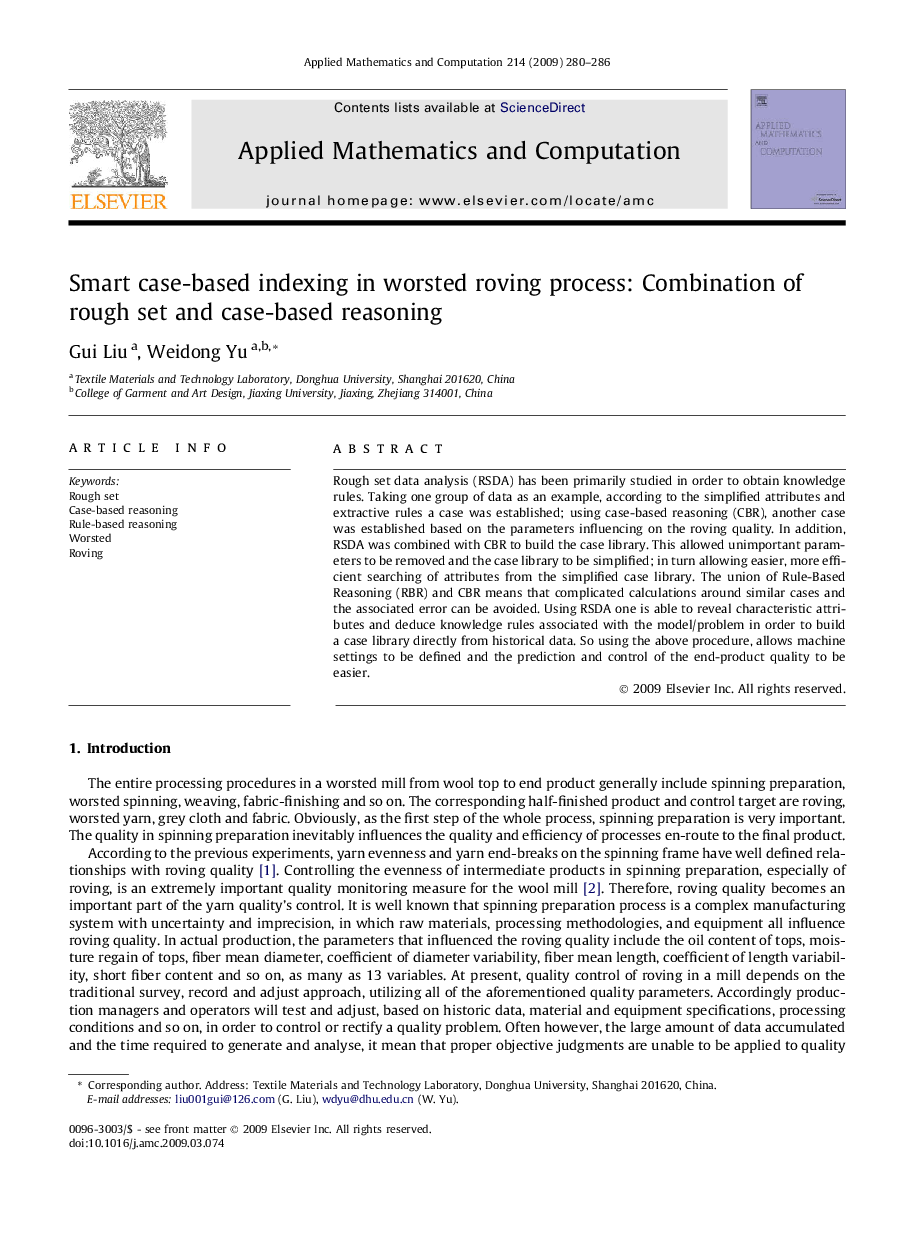| Article ID | Journal | Published Year | Pages | File Type |
|---|---|---|---|---|
| 4633659 | Applied Mathematics and Computation | 2009 | 7 Pages |
Rough set data analysis (RSDA) has been primarily studied in order to obtain knowledge rules. Taking one group of data as an example, according to the simplified attributes and extractive rules a case was established; using case-based reasoning (CBR), another case was established based on the parameters influencing on the roving quality. In addition, RSDA was combined with CBR to build the case library. This allowed unimportant parameters to be removed and the case library to be simplified; in turn allowing easier, more efficient searching of attributes from the simplified case library. The union of Rule-Based Reasoning (RBR) and CBR means that complicated calculations around similar cases and the associated error can be avoided. Using RSDA one is able to reveal characteristic attributes and deduce knowledge rules associated with the model/problem in order to build a case library directly from historical data. So using the above procedure, allows machine settings to be defined and the prediction and control of the end-product quality to be easier.
